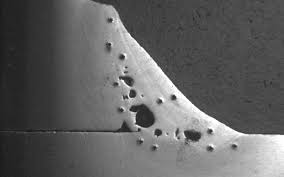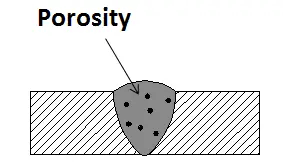Deciphering the Secret of Porosity in Welding: Tips for Lessening Flaws and Making The Most Of Quality
In the complex world of welding, porosity continues to be a consistent challenge that can significantly affect the quality and integrity of welded joints. Understanding the variables that add to porosity formation is important in the search of perfect welds. By deciphering the secret of porosity and applying efficient methods for issue reduction, welders can raise the criteria of their work to attain superior high quality end results. As we look into the depths of porosity in welding, discovering the secrets to its avoidance and control will certainly be extremely important for professionals seeking to grasp the art of top notch weldments.
Understanding Porosity in Welding
Porosity in welding, an usual issue encountered by welders, refers to the existence of gas pockets or voids in the welded material, which can compromise the integrity and top quality of the weld. These gas pockets are normally caught during the welding process due to numerous variables such as inappropriate securing gas, polluted base materials, or incorrect welding parameters. The formation of porosity can damage the weld, making it prone to cracking and corrosion, ultimately resulting in architectural failings.
Comprehending the origin of porosity is critical for welders to properly stop its incident. By acknowledging the value of keeping appropriate gas shielding, ensuring the sanitation of base materials, and optimizing welding settings, welders can significantly minimize the possibility of porosity formation. In addition, using strategies like pre-heating the base material, using proper welding methods, and performing comprehensive inspections post-welding can even more assist in decreasing porosity flaws. Generally, an extensive understanding of porosity in welding is essential for welders to produce premium and resilient welds.

Typical Reasons For Porosity
When examining welding procedures for potential high quality concerns, understanding the common reasons for porosity is essential for keeping weld integrity and stopping architectural failings. Porosity, characterized by the existence of dental caries or spaces in the weld steel, can dramatically endanger the mechanical residential or commercial properties of a welded joint. One typical root cause of porosity is inappropriate securing gas protection. Poor shielding gas flow rates or incorrect gas blends can cause climatic contamination, resulting in porosity formation.
In addition, welding at improper specifications, such as excessively high traveling rates or currents, can create extreme turbulence in the weld swimming pool, trapping gases and triggering porosity. By attending to these typical causes through proper gas shielding, product prep work, and adherence to optimal welding criteria, welders can minimize porosity and boost the quality of their welds.
Techniques for Porosity Avoidance
Executing effective preventative measures is essential in lessening the event of porosity in welding processes. One technique for porosity prevention is ensuring appropriate cleaning of the base steel before welding. Impurities such as oil, grease, discover here rust, and paint can bring about porosity, so thorough cleaning using proper solvents or mechanical techniques is crucial.

Another key precautionary measure is the option of the best welding consumables. Making use of top quality filler products and protecting gases that are ideal for the base steel and welding process can considerably minimize the risk of porosity. Additionally, maintaining proper welding parameters, such as voltage, existing, travel rate, and gas circulation price, is vital for porosity prevention. Differing the advised settings can result click here to read in inappropriate gas insurance coverage and poor combination, resulting in porosity.
Moreover, using correct welding strategies, such as maintaining a consistent travel rate, electrode angle, and arc size, can help stop porosity (What is Porosity). Appropriate training of welders to ensure they adhere to ideal techniques and quality control procedures is likewise necessary in lessening porosity issues in welding

Finest Practices for Top Quality Welds
One secret practice is preserving appropriate cleanliness in the welding area. Completely cleansing the workpiece and bordering location before welding can aid reduce these issues.
One more ideal method is to meticulously pick the suitable welding parameters for the specific products being joined. This includes establishing the proper voltage, current, travel speed, and shielding gas circulation rate. Appropriate specification choice makes sure ideal weld penetration, fusion, and general quality. Furthermore, using high-quality welding consumables, such as electrodes and filler metals, can dramatically impact the last weld top quality. Investing in premium consumables can cause more powerful, much more long lasting welds with less defects. By following these ideal practices, welders can regularly create high-quality welds that meet sector standards official site and surpass customer assumptions.
Relevance of Porosity Control
Porosity control plays an essential role in guaranteeing the honesty and top quality of welding joints. Porosity, characterized by the visibility of cavities or voids within the weld metal, can significantly jeopardize the mechanical buildings and architectural honesty of the weld. Too much porosity damages the weld, making it a lot more vulnerable to cracking, rust, and general failing under operational tons.
Reliable porosity control is necessary for keeping the wanted mechanical homes, such as stamina, ductility, and toughness, of the bonded joint. What is Porosity. By minimizing porosity, welders can enhance the total quality and dependability of the weld, making sure that it fulfills the efficiency requirements of the designated application
In addition, porosity control is vital for attaining the desired aesthetic look of the weld. Too much porosity not only weakens the weld yet likewise detracts from its aesthetic appeal, which can be vital in industries where aesthetic appeals are necessary. Proper porosity control methods, such as utilizing the correct shielding gas, controlling the welding criteria, and guaranteeing correct sanitation of the base materials, are vital for creating high-grade welds with minimal issues.

Verdict
In final thought, porosity in welding is an usual problem that can compromise the top quality of the weld. It is necessary to regulate porosity in welding to guarantee the integrity and toughness of the last item.